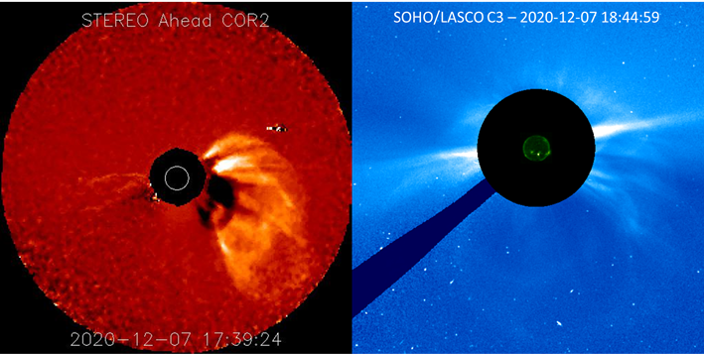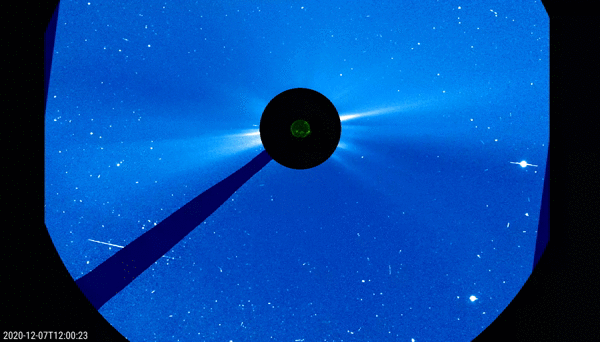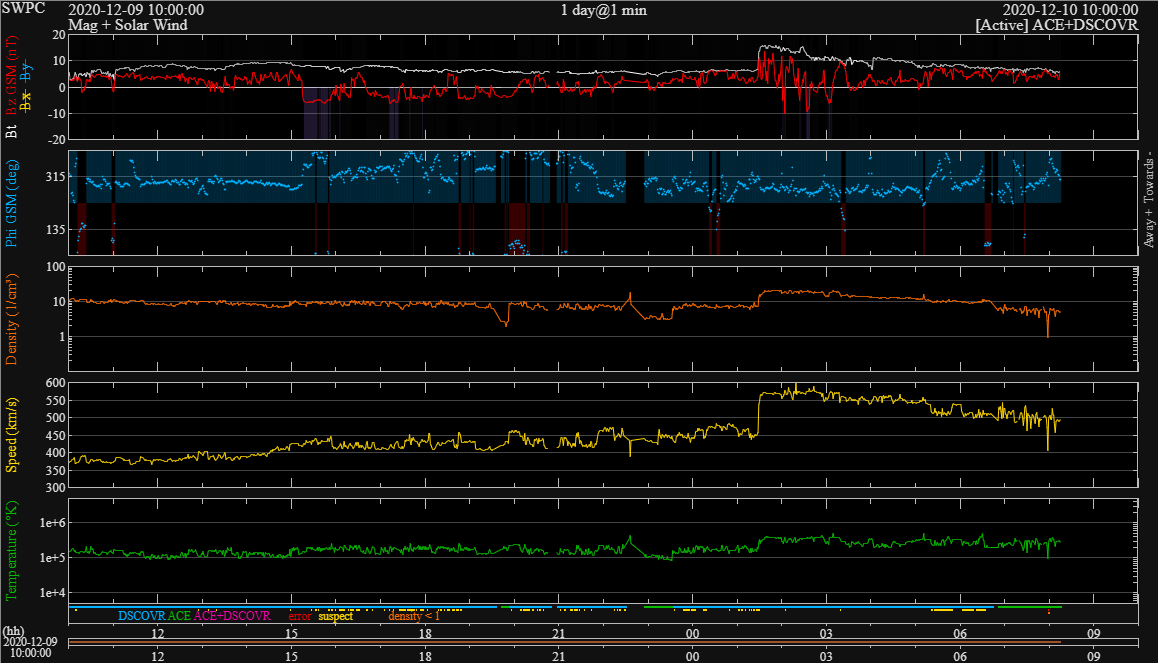The proverbial ink of the previous STCE Newsitem was not even dry, or NOAA 2790, responsible for last week's M4 flare and numerous low-level C-class events, produced a long duration C7.4 flare peaking on 7 December at 16:32UTC. The flare lasted for 107 minutes and produced relatively strong bursts on various radio wavelengths. The 10.7 cm radio flux doubled in value making the event a tenflare. SDO's extreme ultraviolet imagery (EUV) showed that the eruption took place in the same "S-shaped" area as the previous flares, however the magnetic configuration was such that it allowed for a full magnetic reconnection. The candle-flame like structure visible in AIA 094 filter (green colored) is not an imaging artefact. It is called a cusp and indicative of the magnetic reconnection that took place and an indicator that it was associated with a coronal mass ejection (CME). Comparing images from the AIA 094 with those from the somewhat less hot AIA 211 filter (pink colored) reveals post-flare coronal loops and coronal dimming in the latter. The difference imagery of the AIA 211 filter (grey colored; one image subtracted from the next), available at the SIDC's Solar Demon website reveals also the presence of a coronal wave moving away from the blast site.
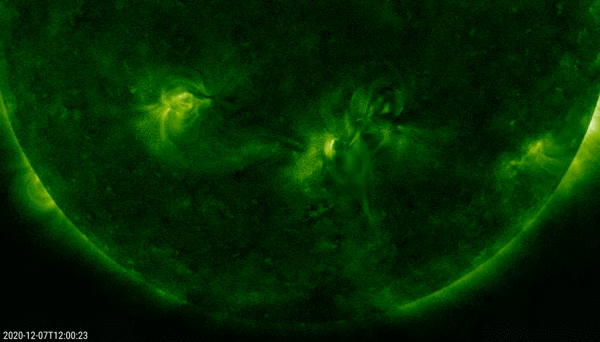
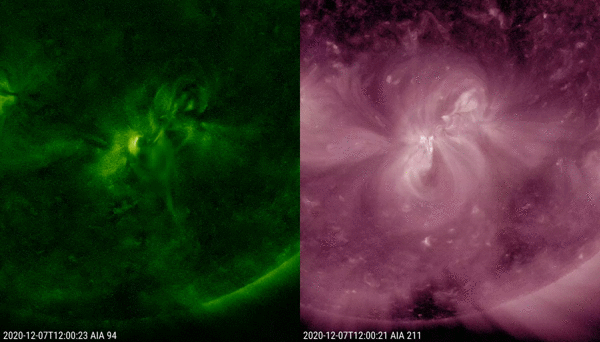
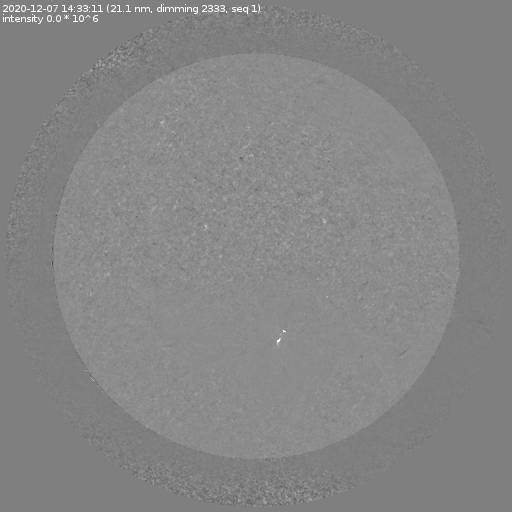
All the aforementioned features are indicative of the presence of a coronal mass ejection (CME), a cloud of charged particles ejected into space. Due to the location of the source region NOAA 2790, one could expect this CME to be directed to Earth. Sure enough, coronagraphic imagery from SOHO revealed a full halo CME shortly after the flare started. Based on imagery from the STEREO-A spacecraft, which had a side-view of the flaring event, the speed of the CME is estimated to be around 1250 km/s. SIDC forecasters thus expect that the projected arrival time is (already) on 9 December around 17:00UTC (+/- 12 hours). The strength of the resulting geomagnetic disturbance is somewhat uncertain, due to the expected presence of high speed stream from a coronal hole, and the uncertainty in the direction of the magnetic field inside the CME. In the worst case, if Earth encounters the bulk of the CME combined with a strong southward component ("negative Bz"), then a strong geomagnetic storm may ensue. In the opposite case, even then the passage of the CME will not go unnoticed.
UPDATE (from the SIDC PRESTO Alert): A shock was seen in the solar wind on 10 December at 01:34 UT marking the arrival of the CME from 7 December. The speed jumped from 450 km/s to 560 km/s and the magnetic field from 6 nT to 16 nT. See the respective yellow and white curves in the DSCOVR solar wind data underneath. As this interplanetary CME did not have long lasting negative Bz embedded in it (red curve), only unsettled geomagnetic conditions were seen locally (K Dourbes =3) and a single active episode at planetary levels (Kp = 4).
